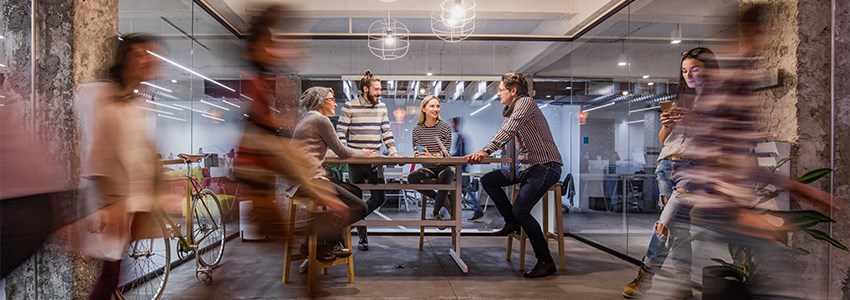Back to the office

Having made our way through more than two years of COVID-19 restrictions, New Zealanders are finally experiencing a welcome taste of ‘normality’. The traffic light system is out, and with that, empty desks are starting to fill as workers trickle back to the office. What people are finding however, it’s not quite the way it used to be…
With many businesses opting for hybrid - that is, a combination of on-site and off-site days for employees - our workspaces are looking and feeling a little different. On a human level, it can be hard to get the whole team together in one place at one time. Revolving rosters mean that workers are scattered, planning is hard and coordination can be tricky.
To add to the challenge, some of us have actually forgotten the basics of how to perform (and behave) in a shared, professional setting.
The noise, disruption and social activity that comes with being surrounded by colleagues can be draining. Old routines, such as making phone calls in front of co-workers, feel foreign. And things that we used to do naturally pre-pandemic, like eating lunch together or engaging in one-on-one conversations, can feel awkward, simply because we are out of practice.
Of course, the degree of discomfort comes down to the individual - some people will be more socially anxious or sensitive than others. Either way, it’s important to be mindful, and show respect. It’s also important to prioritise spending time with your workmates when you are on-site together, both formally and informally, as this will help re-establish connections and firm up a foundation for social familiarity, as we move into the hybrid future.
Hybrid is a new way of operating, still in its early stages, with many businesses trying to work out what success looks like.
Workers too, are in the process of finding the best, most efficient and productive ways to move between home and office. Part of this is ensuring that all the tools, technology, security and set-up they need to do their job is in place, at both ends. But it also involves careful organisation, planning ahead and allocating the right type of task to the right environment in order to make the most of their hybrid week.
For the most part (again, this will depend on the individual), solitary tasks, jobs that can be completed from start to finish without the involvement of others, or jobs that need a concentrated focus, are better suited to working from home. While anything that requires collaboration, conversation, brainstorming or group creativity, is naturally better saved for in-office days.
Workspaces are now being configured to facilitate this new, quite specific purpose.
Some businesses have ‘re-worked’ their floor plan, by setting aside dedicated team-focused spaces or breakout rooms designed to encourage collaboration. Large private offices and cubicles are being swapped out for more flexible spaces and hot desks. There are sound-proofed or quiet areas for those who need to work undisturbed, and large, open lounge spaces, geared towards more casual meetings, spontaneous conversation and social interaction.
Businesses are also putting employees first by providing the latest tools and technology to share information and collaborate, especially with remote team members. Office spaces are being equipped with ergonomic furniture, larger screens for video conferencing, big whiteboards, better lighting, and other comfort and wellbeing-based amenities, which keep workers’ needs top of mind.
Part of it is making the office a place where employees actually want to return to. But it’s also about ensuring that teams have the support, infrastructure and flexibility to do their best work when they are there.
This new world of hybrid is clearly still evolving. But on a positive note, we won’t be struggling with speed bumps forever. If the pandemic has shown us anything, it’s how adaptive humans can be.
